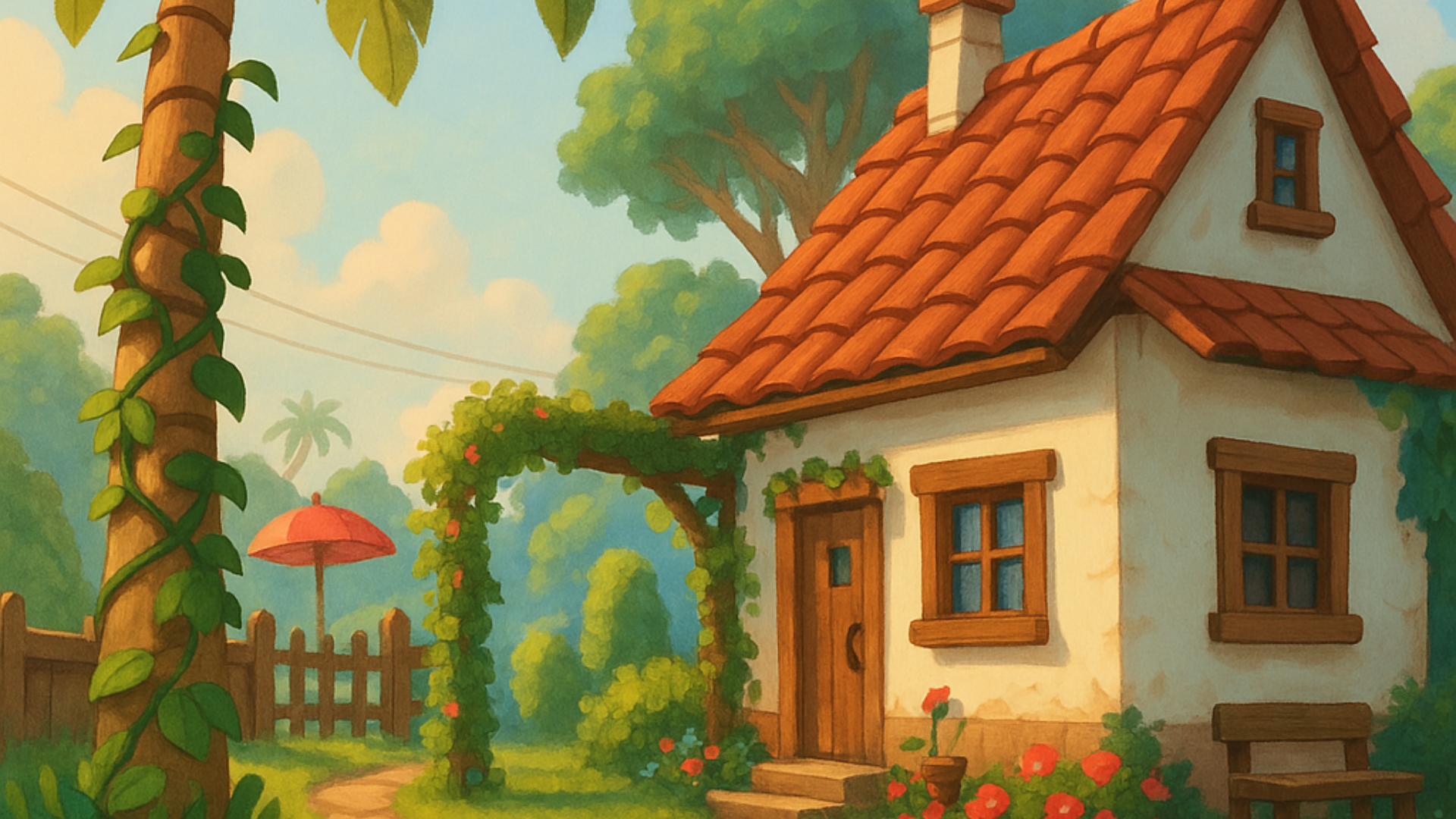Hello, my dear students! Today, we’re going to explore the wonderful world of plants right in our backyard. Plants are all around us—some big, some small, and each with its own special parts and shapes. Let’s take a fun journey to learn more about them.
Discovering Local Plants
When you look around your home, you may see many kinds of plants and trees. Some plants are very small and are called herbs, while others are tall and strong, and we call them trees. Isn’t it amazing how nature creates so many different sizes and shapes?
Parts of a Plant
Every plant is made up of several important parts:
-
- Roots: These keep the plant stable and help it take in water and nutrients from the soil.
- Trunk/Stem: The strong support that helps the plant stand tall.
- Branches: They spread out from the trunk and hold the leaves.
- Leaves: Usually green, they help the plant make food using sunlight.
- Flowers and Fruits: These are not only beautiful but also help the plant make seeds for new plants.
Remember, each part of the plant has a special job. The roots, stem, leaves, flowers, and even fruits work together to keep the plant healthy and growing.
Types of Plants: Trees, Creepers, and Climbers
Let’s talk about a few special types of plants:
-
- Trees: These are the big, tall plants that can stand alone in a garden.
- Herbs: These are the small, delicate plants.
- Creepers and Climbers: Some plants, like the bitter gourd or grape vine, have thin, long stems. They either spread along the ground as creepers or climb up trees, houses, and roofs as climbers. They always need some kind of support to grow.
Enjoying Nature’s Beauty
Take a close look at the leaves and flowers around you. Notice how:
-
- Leaves can have different shapes and sizes, even though they are mostly green.
- Flowers come in many colors like red, blue, white, and yellow. Each color can remind you of a different story or a lovely memory from nature.
Nature is like a big, colorful classroom where every plant teaches us something new. So, keep your eyes open and don’t hesitate to ask questions if you’re curious about any plant you see!
FAQs
Q1: What are the main parts of a plant?
A: The main parts are the roots, trunk/stem, branches, leaves, and the flowers/fruits.
Q2: Why do some plants need support?
A: Plants like creepers and climbers have thin, long stems and need something to hold onto as they grow. They often climb on trees or walls to reach more sunlight.
Q3: How can I tell the difference between a herb and a tree?
A: Herbs are usually small and soft, while trees are big, tall, and have a sturdy trunk.
Q4: Are all leaves the same?
A: No! Leaves can be different shapes and sizes, but most are green. This variety helps plants adapt to different environments.
Take assessment:
1. Multiple Choice Questions (MCQs)
- Example:
Which part of the plant absorbs water and nutrients from the soil?
A) Flower
B) Leaf
C) Root
D) Branch - Example:
What do we call small plants that are soft and delicate?
A) Trees
B) Herbs
C) Climbers
D) Creepers
2. Fill in the Blanks
- Example:
“The ________ holds the plant steady in the soil and helps it take in water.” - Example:
Big, tall plants with strong trunks are called ________.
3. True/False Questions
- Example: Herbs are usually tall and strong. (True/False)
- Example: Creepers need support to grow. (True/False)
4. Matching Type Questions
- Example:
Match the plant part with its function:
- Roots → ___ (Absorbs water and nutrients)
- Trunk/Stem → ___ (Supports the plant)
- Leaves → ___ (Helps make food using sunlight)
5. Short Answer Questions
- Example:Write the names of at least three parts of a plant and describe what each part does.
- Example: Explain in your own words why climbers need support.
6. Diagram Labeling and Identification Questions
- Example: Look at the picture of a plant provided. Label the parts of the plant (roots, trunk, branches, leaves, and flowers).
- Example: Identify and circle the creeper in this group of plants.
7. Picture Observation Questions
- Example: Observe the pictures of different leaves. How are the shapes and sizes of the leaves different from one another?
- Example: Look at the picture of the backyard. Name two plants you see and describe one unique feature of each.”
8. Open-Ended Questions
- Example:What do you like most about the plants in our backyard? Explain your answer.
- Example: Describe how you think plants help our environment and our daily lives.
9. Activity-Based Questions
- Example: Go outside with your parents and write down the names of any three plants you see. What makes each one special?
- Example: Collect a dry leaf and try to find out its name by comparing it to the pictures in your book. Share your findings with the class.

